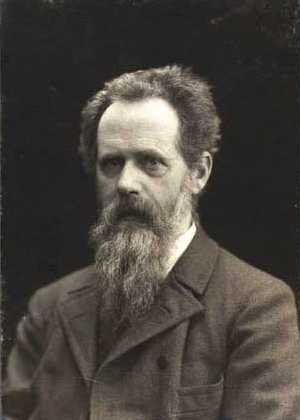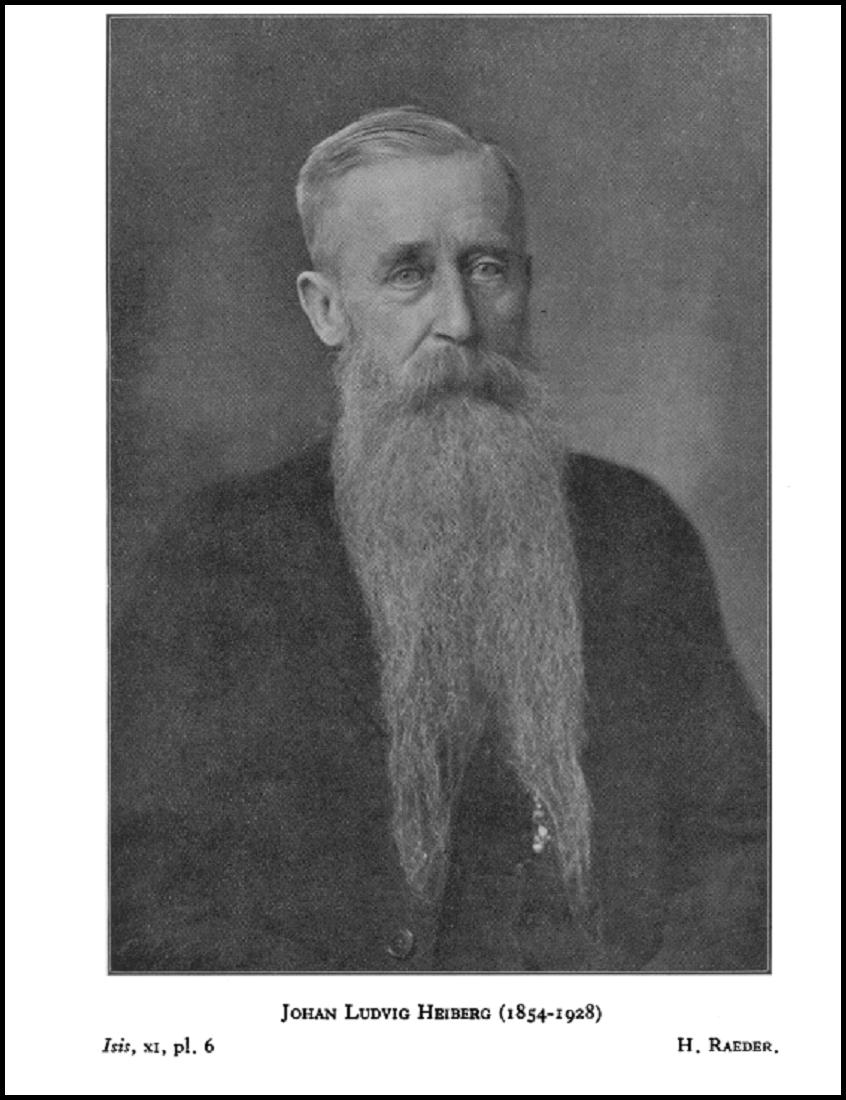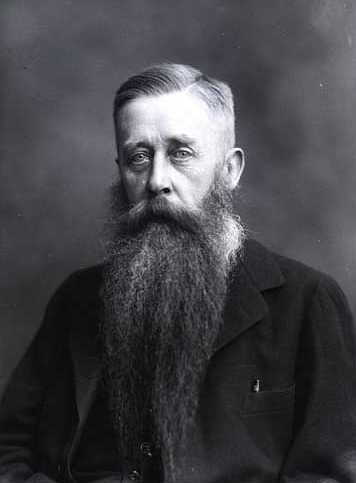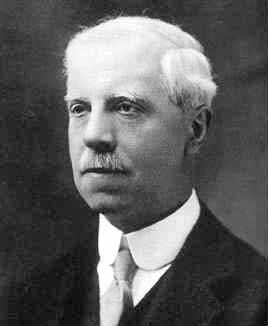Euclid's Elements - A 2,500 Year History
Bob Gardner
East Tennessee State University
Department of Mathematics and Statistics
Johnson City, TN 37614
The Elements - Heiberg and Heath
The most popular and widely available version of The Elements today is the so-called "Heiberg/Heath" translation. For this reason, we explore the history of this edition in more detail.

Johan Ludvig Heiberg
(1854-1928)
Image from: Wikipedia
Johan Ludvig Heiberg lived from 1854 to 1928. He was a professor of Classical Philology at the University of Copenhagen. His publications (which number over 200) include translations of Archimedes, Apollonius of Perga, and, most important to us, Euclid. He also studied the famous Archimedes Palimpsest in 1906. He studied several extant editions of The Elements when writing his Euclidis Elementa which was published between 1883 and 1888. He was attempting to create a Greek edition of The Elements similar to Euclid's original version.

Image from: Isis, Vol. 11, No. 2 (Dec., 1928), pp. 367-374
|

Image from: Wikipedia
|
Richard J. Trudeau in The Non-Euclidean Revolution [page 23; Birkhauser 1987] says
"...a new Greek text was compiled in the 1880s by the Danish philologist [linguist] Johan L. Heiberg, which is probably the closest scholars will ever come to reconstructing the original."
The Perseus Digital Library of Tufts University (http://old.perseus.tufts.edu/) has a copy of this text available online.
Heiberg used many of the manuscripts mentioned above, in particular the Bodleian Manuscript and Vatican Manuscript Number 190.

Sir Thomas Little Heath
1861-1940
Image from The MacTutor History of Mathematics archive.
Sir Thomas Little Heath, an Englishman, attended Trinity College in Cambridge.
He worked for English government from 1884 to 1926 as the Joint Permanent Secretary of the Treasury and Auditor of the Civil List. Even though he held down a full-time job, he was still able to produce some of the most important translations of classical Greek mathematicians [Smith 1936].
Heath's first publication was Diophantos of Alexandria: a Study in the History of Greek Algebra, which appeared when he was only twenty-four years of age, (1885) and a second, more scholarly edition appearing in 1910.
His second work was Apollonius of Perga, Treatise on Conic Sections, which appeared in 1896.
The third book published by him was The Works of Archimedes in 1897.
It is probable that the most important of Sir Thomas Heath's works is The Thirteen Books of Euclid's Elements, the object of our interest. This was published in three volumes in 1908 with a second edition appearing in 1926.
In 1912 a new edition of the Works of Archimedes included the Method of Archimedes with commentaries as a supplement.
Heath expanded his horizons in 1913 to include the history of Greek astronomy when he came out with Aristarchus of Samos - The Ancient Copernicus.
In 1920 Heath published a little book entitled Euclid in Greek, Book I, with Introduction and Notes which offered a Greek version of Euclid with English commentary.
After Heath's version of Euclid, probably his best known work is his History of Greek Mathematics, which is said to be the most satisfactory treatment of the subject that we have in any language [Smith 1936].

Sir Thomas Little Heath
1861-1940
Image from: Smith, David Eugene, "Sir Thomas Little Heath," Osiris, 2 (1936), pp. IV-XXVII.
In addition to his many books, Heath wrote many papers and reviews, along with a number of articles for the various editions of the Encyclopaedia Britannica. This prolific person was instrumental in getting Euclid to the English speaking audience of the 20th century and beyond.
Go to the next section: The Local History of The Elements.
Last revised July 17, 2023.





